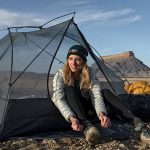Senate Interior Appropriation Bill 2840, which handles budget appropriations for various national forests and National Parks, is slated to come up for a vote this week. Several organizations, including the OIA and the Sierra Club, are keeping a close eye on the developments since the outcome could have major impacts on both environmental and economic issues.
The Tongass/Chugach Rider on the Senate Bill limits judicial action with regards to future timber sales and effectively eliminates public's ability to challenge projects if they cannot file lawsuits on Tongass logging projects within 30 days of the Forest Service's decision to go ahead with them. The Biscuit Timber Sale in Oregon is also a rider on the Bill and has been described as “the largest federal timber sale in recent history.” This sale would log 8,000 acres of wild roadless forest and damage sensitive salmon habitat according to the Sierra Club.
Despite a $10 billion road maintenance backlog on National Forests, the line items for commercial logging and logging road construction are increased over FY04, instead of spending that money on fuel reduction programs near communities. Additionally, The National Park service will be forced to reduce visitor services once again since funding is inadequate to cover current operating expenses.
Park resources are expected to be seriously threatened should this version of the bill pass. The bill also fails to provide the $1.68 billion to fully fund the Land and Water Conservation Fund. Myrna Johnson, OIAs VP of Government Affairs, told BOSS the Conservation Fund was “grossly under-funded” and correcting this is one of the OIAs top priorities in DC.
Finally, flying in the face of Patagonias extensive Salmon-Nation advertising and activism campaign, the Bill contains provisions allowing aquaculture in wilderness and other protected areas in Alaska. This stipulation overturns a recent federal court decision and allows commercial fish hatcheries in protected Wilderness Areas in National Parks, Wildlife Refuges and on Wild and Scenic Rivers in Alaska.
Commercial hatcheries threaten wild salmon runs by introducing disease, reducing genetic diversity, and altering the natural balance of aquatic ecosystems.















